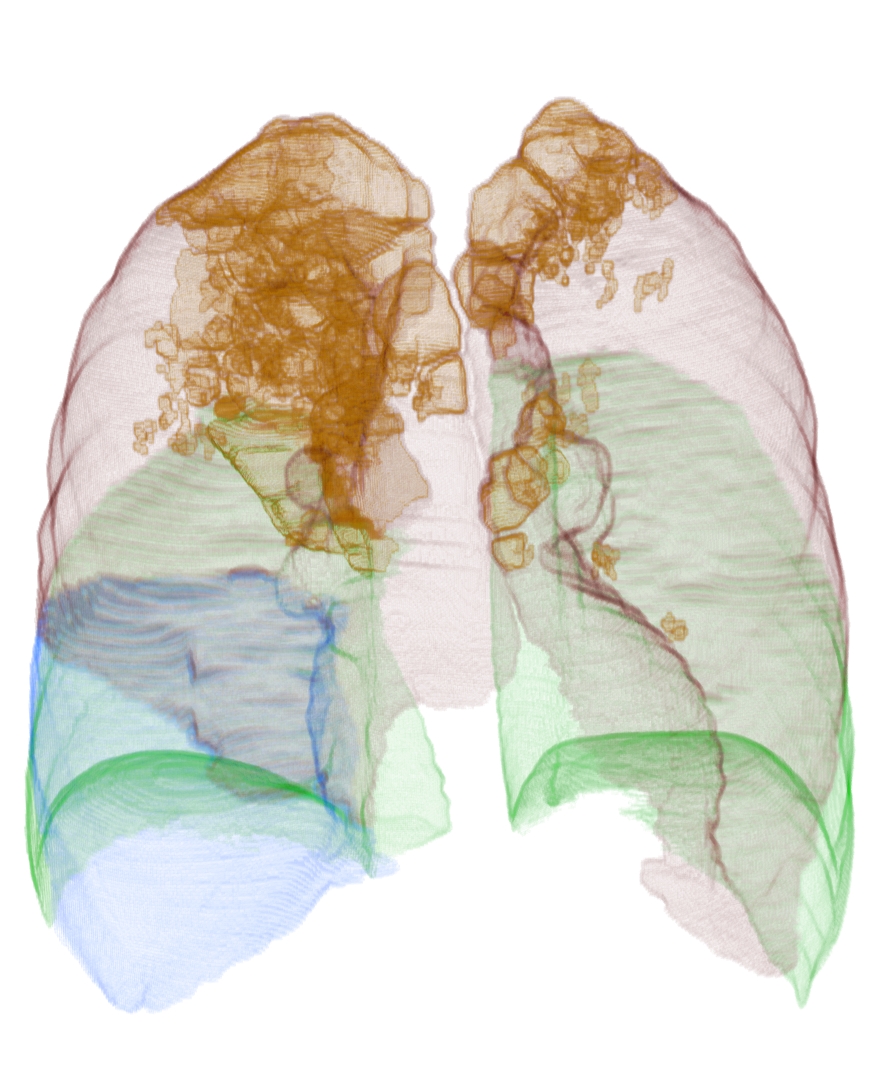Clinical Challenges
Chronic obstructive lung disease (COPD) is one of the most prominent causes of death in the industrial world. Current clinical research is aimed at developing treatment methods. For this, quantitative staging and monitoring of the disease is highly important, including the differentiation between airway-dominant disease and parenchyma-dominant disease. Moreover, selected cases of severe emphysema benefit from lung volume reduction using surgical, and, more recently, minimally invasive techniques such as bronchial valves. Regional image analysis is crucial for selecting patients and planning these procedures.
Solutions & Features
We provide a wide range of image processing algorithms including deep learning methods.
Our software focuses on the following aspects for COPD diagnosis:
Parenchyma Analysis
- Segmentation of lungs, lobes and segments
- Intuitive improvement of segmentation
- Regional quantification
- Volumes
- Mean lung density
- Emphysema quantification and characterization
- Lobar fissure analysis
- 3D visualization of emphysema distribution
- Image registration
Airway Analysis
- Segmenting and labeling airways
- Quantifying lumen and wall dimensions
- Analysis of oblique cross sections
- Correcting for partial volume effects based on intensity integration techniques
- Fully automated reporting workflow
- Interactive visualization and exploration
The lung and lobe segmentation algorithms won first prize in the Lung and Lobe Segmentation Challenge held at the MICCAI 2011 conference (LOLA11).
Pulmo 3D
Parenchyma and airway analysis is integrated into the Pulmo3D software used by numerous sites for clinically researching and evaluating COPD diagnosis, intervention planning, and monitoring. Quantitative parenchyma and airway analysis has been successfully applied to more than 1000 datasets.
SATORI
The browser-based toolkit SATORI provides a workflow for quantitative lung parenchyma analysis including AI-based fast segmentation of lungs and lung lobes. A report provides the results of the quantitative analysis such as volume, LAV and HAV per lobe.
 Fraunhofer Institute for Digital Medicine MEVIS
Fraunhofer Institute for Digital Medicine MEVIS
